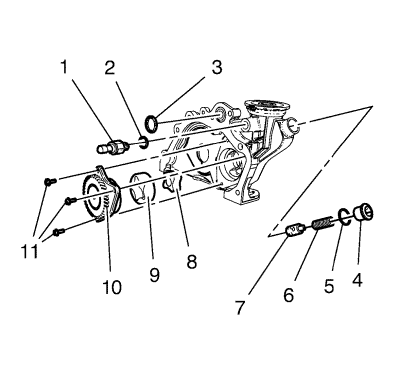Oil Pressure Diagnosis and Testing
Special Tools
EN-498-B Oil Pressure Gauge
For equivalent regional tools, refer to Special Tools .
- With the vehicle on a level surface, run the vehicle for a few minutes, allow adequate drain down time, 2-3 minutes, and measure the oil level.
- If required, add the recommended grade engine oil and fill the crankcase until the oil level measures full on the oil level indicator.
- Run the engine briefly, 10-15 seconds, and verify low or no oil pressure on the vehicle gauge or lamp.
- Listen for a noisy valve train or a knocking noise.
- Inspect for the following conditions:
| • | Oil diluted by water or glycol antifreeze |

- Remove the engine oil pressure sensor (1).
- Install the EN-498-B gauge to the engine oil pressure sensor thread hole and tighten to 30 N·m (23 lb ft).
- Run the engine and measure the engine oil pressure.
- Compare the readings to Engine Mechanical Specifications .
- If the engine oil pressure is below specifications, inspect the engine for 1 or more of the following conditions:
| • | Cracked, porous, or restricted oil galleries. |
Caution: This engine uses a special high performance oil filter. Use of any other filter may lead to filter failure and/or severe engine damage.
- If the oil pressure reading on the EN-498-B gauge , or equivalent, is within specifications, inspect for the following conditions:
| • | Plugged or incorrect oil filter and/or malfunctioning oil bypass valve. Repair, as necessary. |
| • | Malfunctioning EN-498-B gauge or sensor. Repair, as necessary. |
| © Copyright Chevrolet. All rights reserved |
